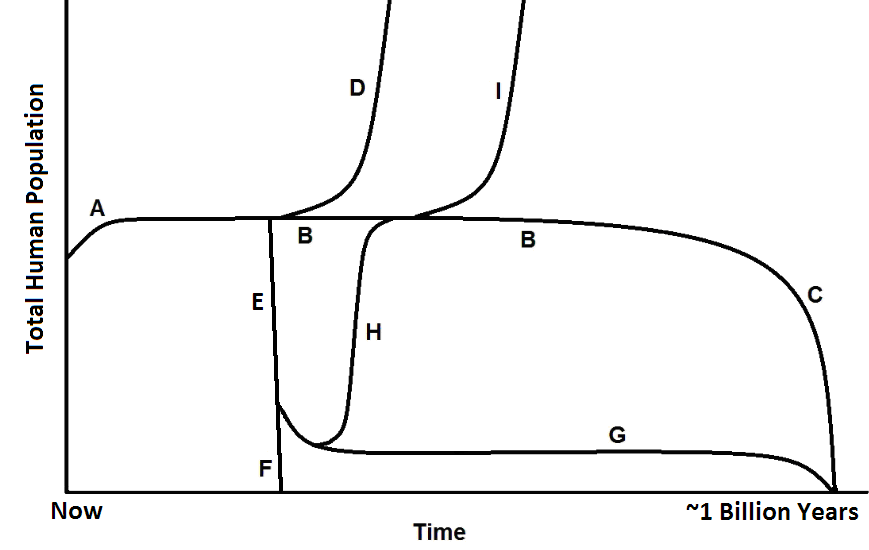Adaptation to and recovery from global catastrophe
Human survivors of a global catastrophe may be able to adapt to post-catastrophe conditions and recover civilization.
Timothy M. Maher Jr. and Seth D. Baum, 2013. Adaptation to and recovery from global catastrophe. Sustainability, vol. 5, no. 4 (April), pages 1461-1479.
Full article: Available free online at Sustainability * Click here for the full pdf.
Abstract:
Global catastrophes, such as nuclear war, pandemics and ecological collapse threaten the sustainability of human civilization. To date, most work on global catastrophes has focused on preventing the catastrophes, neglecting what happens to any catastrophe survivors. To address this gap in the literature, this paper discusses adaptation to and recovery from global catastrophe. The paper begins by discussing the importance of global catastrophe adaptation and recovery, noting that successful adaptation/recovery could have value on even astronomical scales. The paper then discusses how the adaptation/recovery could proceed and makes connections to several lines of research. Research on resilience theory is considered in detail and used to develop a new method for analyzing the environmental and social stressors that global catastrophe survivors would face. This method can help identify options for increasing survivor resilience and promoting successful adaptation and recovery. A key point is that survivors may exist in small isolated communities disconnected from global trade and, thus, must be able to survive and rebuild on their own. Understanding the conditions facing isolated survivors can help promote successful adaptation and recovery. That said, the processes of global catastrophe adaptation and recovery are highly complex and uncertain; further research would be of great value.
Non-Technical Summary: pdf version
Background: From Catastrophe to Adaptation and Recovery
Global catastrophes, such as nuclear war, pandemics, and ecological collapse threaten the long-term sustainability of human civilization. A lot of research has studied the nature of global catastrophes and how to prevent them. The research neglects what happens to any human survivors of the catastrophe. This paper analyzes the possibility that survivors may adapt to post-catastrophe conditions, recover civilization and perhaps even go on to colonize space. The paper considers both the importance of adaptation/recovery and how adaptation/recovery may proceed.
Importance of Global Catastrophe Adaptation and Recovery
The stakes with global catastrophes are literally astronomical. As a starting point, note that Earth will remain habitable for approximately one billion more years, at which point the Sun transitions to a Red Giant state and becomes too warm and large for life on Earth. If humanity can colonize space, it can survive for much longer and achieve results of great value across the universe. A global catastrophe could prevent that. However, if humanity could adapt to and recover from the global catastrophe, then it could potentially go on to colonize space. Thus adaptation and recovery could be a crucial feature in the fate of human civilization in the universe.
Resilience: Environmental and Social Stressors
Many lines of research can help clarify how global catastrophe adaptation and recovery would proceed, including research on pre-modern humans, human cultural evolution, contemporary subsistence farming communities, and local catastrophes. We highlight research on socio-ecological resilience as particularly promising. Resilience is the ability of a system to withstand a shock. A global catastrophe would be a very large shock. Would humanity have enough resilience to survive? This question can be answered by examining the environmental and social conditions of post-catastrophe survivors, and the stressors that these conditions induce. In the extreme case, the stressors are too much for the survivors, exceeding their resilience and causing them to die.
Promoting Successful Adaptation And Recovery
By analyzing the environmental and social stressors associated with global catastrophe scenarios, we can identify plans for promoting successful adaptation and recovery. These plans can be put in place now, before the onset of global catastrophe. Consider cosmic impact, supervolcano and nuclear winter global catastrophe scenarios. These scenarios all put dust into the atmosphere, an environmental stressor that cripples agriculture. Food stockpiles could help overcome this, especially if located in areas likely to have survivors, such as the equatorial Andes or other rural equatorial highlands. Social stressors that survivors are likely to face include the breakdown of social institutions and loss of social memory. Catastrophe-proof knowledge-banks, schools or libraries could help overcome these stressors.
Towards A New Line Of Research
This paper presents just a preliminary analysis of global catastrophe adaptation and recovery. Much more research is needed to understand this vital topic. Future work could include modeling exercises examining the consequences of various global catastrophes, including climate change, ocean acidification, nuclear war and global epidemics. Additionally, any efforts to increase our knowledge on social-ecological vulnerabilities and resilience would be useful.

This figure shows a rough sketch of the total human population over time for several different scenarios:
* A shows the current human population, which is growing but leveling off
* B shows the population staying stable
* C shows humanity dying out as the Sun goes Red Giant in one billion years
* D shows space colonization
* E shows a global catastrophe
* F shows the global catastrophe resulting in human extinction
* G shows humanity adapting to post-catastrophe conditions and surviving in lower numbers
* H shows humanity recovering back to its pre-catastrophe state
* I shows space colonization after recovery
Created 28 Mar 2013 * Updated 29 Jul 2013
